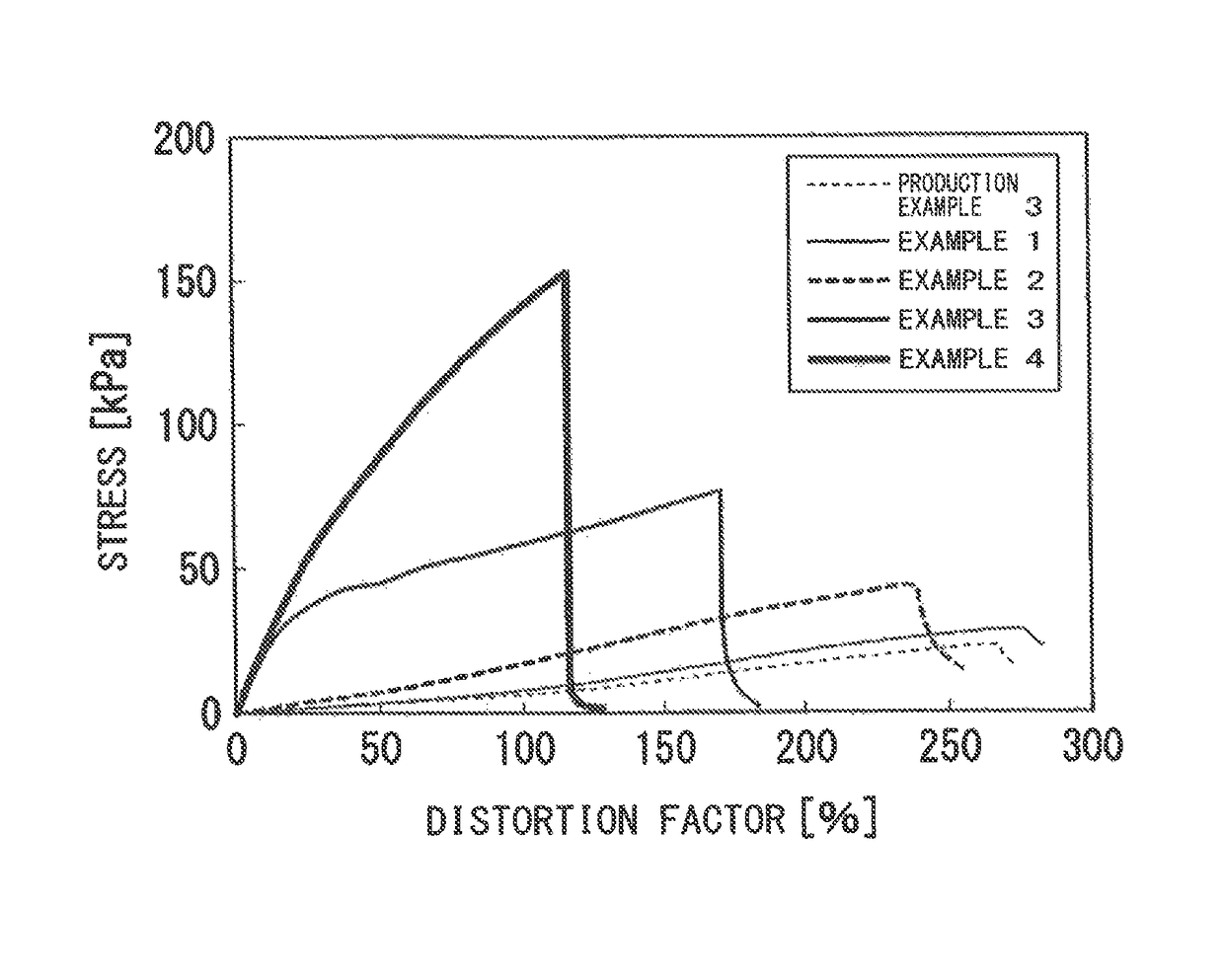Method for producing gel
a gel and gel technology, applied in the field of gel production methods, can solve the problems of difficult gel production, low strength of sheet gel, and increased viscosity, and achieve the effects of improving operativity during production, increasing the amount of solvent, and achieving desirable strength
- Summary
- Abstract
- Description
- Claims
- Application Information
AI Technical Summary
Benefits of technology
Problems solved by technology
Method used
Image
Examples
production example 1
ONITE XLG Aqueous Dispersion
[0084]7.5 Parts of low polymerization sodium polyacrylate (JURYMER AC-103, available from TOAGOSEI CO., LTD., weight average molecular weight: 6,000), 3 parts of urea (available from JUNSEI CHEMICAL CO., LTD.), 0.5 parts of phenoxyethanol (available from JUNSEI CHEMICAL CO., LTD.), and 74 parts of water were mixed and stirred at 25° C. until a uniform solution was produced. To the solution, 9 parts of LAPONITE XLG (available from Rockwood Additives Ltd.) was added little by little, the mixture was uniformly dispersed, and 3 parts of 10% aqueous solution of citric acid (available from JUNSEI CHEMICAL CO., LTD.) was then added. The mixture was heated to 80° C. with vigorous stirring, stirred at 80° C. for 30 minutes, and stirred with cooling to 25° C. in an ice-water bath. To the mixture, 3 parts of 10% aqueous solution of citric acid (available from JUNSEI CHEMICAL CO., LTD,) was added, and the mixture was vigorously stirred for 1 hour to obtain a desired ...
production example 2
odium Polyacrylate Aqueous Solution
[0085]3 Parts of urea (available from JUNSEI CHEMICAL CO., LTD.), 0.5 parts of phenoxyethanol (available from JUNSEI CHEMICAL CO., LTD.), and 92.5 parts of water were mixed and stirred at 25° C. until a uniform solution was produced. While this solution was vigorously stirred, 1.5 parts of highly polymerized sodium polyacrylate (VISCOMATE NP-800: available from Showa Denko K.K.) was added little by little, and the mixture was vigorously stirred at 25° C. (for 5 hours) until the highly polymerized sodium polyacrylate was completely dissolved, to obtain a desired product.
production example 3
Shaped Gel 1
[0086]To 6 mL of the 9% LAPONITE XLG aqueous dispersion produced in Production Example 1, 6 mL of water was added, and the mixture was stirred at 25° C. for 10 minutes. To this mixture, 12 mL of the 1.5% sodium polyacrylate aqueous solution produced in Production Example 2 was added, and the mixture was vigorously stirred at 25° C. for 1 minute. The mixture was poured uniformly into a dish with a diameter of 9 cm, covered with a lid, and allowed to stand at 25° C. for 48 hours, to obtain a desired product.
PUM
| Property | Measurement | Unit |
|---|---|---|
| diameter | aaaaa | aaaaa |
| boiling point | aaaaa | aaaaa |
| boiling point | aaaaa | aaaaa |
Abstract
Description
Claims
Application Information
 Login to View More
Login to View More - R&D
- Intellectual Property
- Life Sciences
- Materials
- Tech Scout
- Unparalleled Data Quality
- Higher Quality Content
- 60% Fewer Hallucinations
Browse by: Latest US Patents, China's latest patents, Technical Efficacy Thesaurus, Application Domain, Technology Topic, Popular Technical Reports.
© 2025 PatSnap. All rights reserved.Legal|Privacy policy|Modern Slavery Act Transparency Statement|Sitemap|About US| Contact US: help@patsnap.com

